 As any organization approaches the year end, it’s common to reflect on the successes achieved and challenges faced. This year was jam-packed for the Water Power Technologies Office (WPTO). Despite the many challenges that came in 2020—including a transition to remote work, moving events virtual, and project adjustments—WPTO and its partners were able to safely and successfully execute research and development (R&D) activities to advance hydropower and marine energy technologies.
In the coming days, we will publish a document highlighting WPTO accomplishments over the past two years. We are proud of these R&D successes and the people who drove them, including WPTO staff and partners from across the national labs, academia, industry, and other federal agencies. We hope you’ll join us in celebrating the ingenuity and resiliency of the U.S. hydropower and marine energy research communities. In the meantime, we’re using this issue of Water Wire to highlight a sample of those featured stories and provide a re-cap of other WPTO-led work in 2020, including funding announcements, prize and competition updates, new tools and insightful analyses, technical webinars and events, STEM updates, and other hot topics. Also, as usual, we’ll call your attention to upcoming deadlines for WPTO opportunities. We encourage you to dive into these stories below and continue to stay current with WPTO’s latest news in our semi-monthly Water Wire.
WPTO wishes you a healthy and successful new year, and we look forward to our continued collaboration.
Estimated Read Time: 10 minutes
Upcoming Submission Deadlines
WPTO works with national laboratories, industry, universities, and other federal agencies to conduct R&D activities through competitively selected, directly funded, and cost-shared projects and prizes. The following opportunities are still open for submission:
Success Stories
As mentioned, WPTO plans to release a compendium of accomplishments that highlights a few R&D successes over the past two years. Check out a few example stories below and stay tuned for the report to learn more about many of these projects:
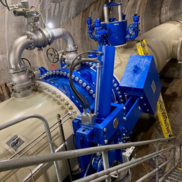
California Hydroelectric Project Is Now Operational
The Sacramento Municipal Utility District’s (SMUD’s) new 2.7-megawatt hydroelectric powerhouse, which received $1.5 million in DOE funding, is now operational. Electricity from the South Fork Powerhouse will supplement generation from an existing powerhouse at Slab Creek Dam. As the new powerhouse is considered a “small hydro” project (less than 30 MW), the electricity it produces will count toward California’s Renewable Portfolio Standard.
|
Announcements and Opportunities
This year, WPTO and our partners leveraged a variety of funding mechanisms and opportunities to inspire innovation and help advance water power technologies. From offering technical assistance and partnering with other agencies on prizes, to supporting small business through avenues like the Small Business Innovation Research program, our office sought to fill R&D gaps and address challenges faced by industry and research communities, as well as by the federal hydropower family. For example, WPTO announced selections for 10 new marine energy projects in December. These new projects will support foundational R&D at research institutions and expand testing capacity to advance the marine energy industry. Also through this opportunity, WPTO is adding a new Atlantic Marine Energy Center, the University of New Hampshire, to its partnership network and enlisting the support of a Foundational Research Network Facilitator, Pacific Ocean Energy Trust, to help coordinate and enhance WPTO-funded research results.
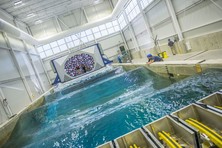
We also worked with partners to stand up new programs offering specialized technical assistance, such as the Energy Transitions Initiative Partnership Program (ETIPP), which is currently accepting technical assistance applications, and the U.S. Testing Expertise and Access for Marine Energy Research (TEAMER) Program, which offers technical support for marine energy testing. Meanwhile, we also partnered with other federal agencies on multiple prizes and renewed some of our interagency partnerships through the new Memorandum of Understanding (MOU) for Hydropower. On National Hydropower Day, DOE, the Bureau of Reclamation, and the U.S. Army Corps of Engineers signed an MOU to enhance collaboration and leverage resources to ensure the continued strength of the federal hydropower fleet. The agencies plan to release a subsequent Action Plan in early 2021.
|
If you’re interested in learning more about the variety of WPTO funding and technical assistance programs offered this year, we encourage you to explore the links below. While just a sampling, these announcements show the range of funding mechanisms employed by WPTO in 2020.
Prize & Competition Updates
Prizes and competitions are important tools in WPTO’s portfolio and are designed to tap into the ingenuity and creativity of solvers nationwide. Prizes are organized with defined goals and time frames. This year, WPTO and National Lab partners supported seven prizes spanning diverse topics—including marine energy powered desalination, protecting fish from dams and other water infrastructure, and applying advanced manufacturing techniques to small hydropower. In two of our prizes, we partnered with other federal agencies to inspire innovators to think beyond the current state of industry.
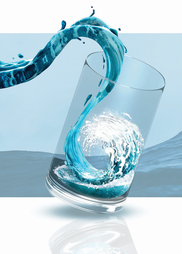
For example, our team launched the first prize under DOE’s Water Security Grand Challenge, the Waves to Water Prize, to develop wave-powered desalination systems. Into 2021, competitors will focus on designing flexible systems to meet the conditions at a specific location—Jennette’s Pier—as part of the competition’s ADAPT Stage.
A new addition to WPTO’s prize portfolio, the Groundbreaking Hydro Prize, challenges competitors to develop inventive ideas to cut the costs, timelines, and risks associated with geotechnical foundations, which provide structural support for hydropower facilities.
|

We also launched WPTO’s first-ever Marine Energy Collegiate Competition (MECC), which drew in more than 100 collegiate students to propose market research-supported business cases for marine energy.
WPTO and NREL will host a new round of the MECC in 2021 and recently announced the new competitors.
Since October 2019, WPTO has awarded over $2.5 million in lab vouchers and cash prizes to over 70 prize winners while supporting 32 teams to participate in the first and second rounds of the Marine Energy Collegiate Competition.
|
WPTO’s full scope of prizes and competitions active in 2020 includes the following:
Publications and Products
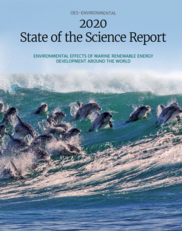
In support of WPTO’s mission, DOE’s National Labs and WPTO’s project partners developed tools, handbooks, analytic findings, journal articles, and other products throughout the year for the benefit of the industries at large. For example, WPTO released an updated version of the Handbook of Marine Hydrokinetic Regulatory Processes, an informational tool intended to help stakeholders easily find and understand federal and state authorization processes. We also saw a big success this year with the release of the 2020 State of the Science Report—the result of years of data compilation and research from more than 30 scientists across the globe to better understand the impact marine renewable energy devices have on the marine environment.
|
WPTO’s HydroWIRES Initiative released a new report comparing open-loop pumped storage hydropower (PSH), where there is an ongoing hydrologic connection to a natural body of water, to closed-loop PSH, where the reservoirs are not connected to an outside body of water. Finally, we released our 2019 Peer Review report, which presents the results from a comprehensive portfolio-wide review from external subject matter experts and shares how the Marine and Hydrokinetics and Hydropower programs intend to address reviewers’ feedback.
Some other highlights from the year include:
Webinars and Events
2020 brought an emphasis on virtual events, and WPTO was able to leverage the virtual environment to amplify funding opportunities and disseminate new research products and tools—like those mentioned in this Water Wire. We also appreciated opportunities to discuss the current state of water power technologies, as well as collaborate and brainstorm on challenges and opportunities to continue moving the industries forward both nationally and globally.
In collaboration with our lab partners, WPTO hosted several webinars where we highlighted our prizes and recognized competitors; hosted our semi-annual webinar; and provided guidance on open opportunities.
We also attended and participated in many events, including UMass Dartmouth’s Third Annual Marine Renewable Energy Conference and the International Forum on Pumped Storage Hydropower, which was highlighted by Greentech Media; and, we joined two other DOE offices to present in a Women in Energy Webinar.
Check out past Water Wires for more information and recordings of water power-related events.
STEM Spotlight
This year, we increased our support for Science, Technology, Engineering, and Mathematics (STEM) activities. From launching our first collegiate competition, to launching STEM-focused portals for hydropower and marine renewable energy, we recognized the critical role STEM plays in the development of the existing and future water power workforce. This year, WPTO welcomed five new graduate student researchers through the MHK Graduate Student Research Program to work with DOE and partners while completing their doctoral theses focused on marine energy. We also opened the program for new applicants and will be making more hires in 2021.
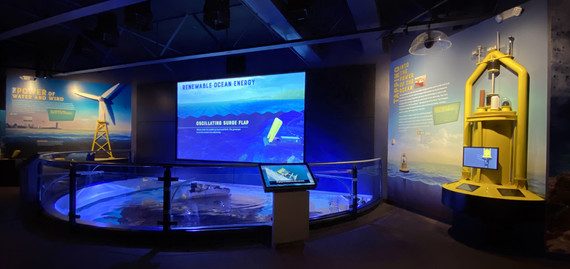 Conservation In Action Series: Renewable Ocean Energy-A Virtual Tour & Panel Event
Additionally, after 2 years of collaboration among WPTO, NREL, and industry partners, Mystic Aquarium unveiled a new exhibit focused on renewable ocean energy, namely marine energy and offshore wind. Finally, throughout the year, we highlighted STEM careers and people who support WPTO. Here are a few of our favorite spotlights:
In Case You Missed It
In 2020, WPTO staff and their work were featured in several publications and podcasts; we developed several blog posts; and our program partners and the national labs featured many project successes and updates across various channels. For example, in partnership with PNNL, The Economist published a new report that examines the past, present, and future of energy innovation within the blue economy. Earlier in the year, WPTO Director Alejandro Moreno discussed ocean prizes and technologies with the Environmental and Energy Study Institute (EESI) for a Q&A-style article. And, this summer, Moreno kicked off National Hydropower Day, in collaboration with NHA, participating in a fireside chat: The Future of Hydro in a Rapidly Changing Grid: A DOE Perspective. Assistant Secretary for Energy Efficiency and Renewable Energy Daniel R Simmons was featured in the Spring 2020 issue of the International Desalination Association’s Global Connections, discussing WPTO projects and prizes. And, multiple staff were recognized for personal achievements this year, including WPTO Fellow Charles Scaife who, along with his co-authors, received the Outstanding Paper of the Year award from Hydrological Processes on their paper, “Transpiration and subsurface controls of streamflow recession characteristics.”
While there are too many great features to list, check out some more examples below:
2020 was a big year for WPTO and our partners, and we can’t wait to see what 2021 has in store. For our semi-monthly highlights, check out past Water Wires on the WPTO website.
|